Art & Culture
All about the Van Gogh Museum
Published
2 years agoon
By
Berry Fox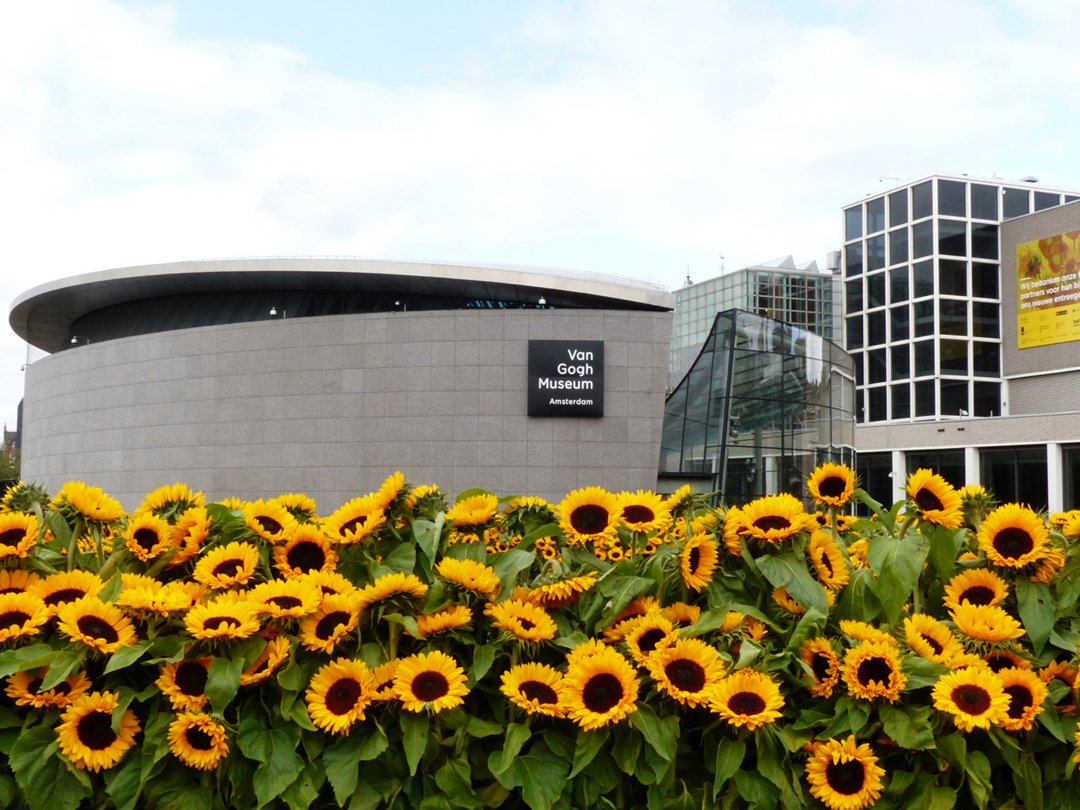
There is a museum in Amsterdam dedicated to Van Gogh, one of the world’s most famous painters and the symbol of the city. Although Van Gogh was able to sell only one work during his lifetime, he is remembered with great interest and respect today.
In this article, we will share all the details about the Van Gogh Museum and Van Gogh, and we will answer questions such as how to buy a Van Gogh Museum ticket and what are the types. Since our article is quite long, you can go directly to the Van Gogh Museum Ticket and entrance fee section below.
Vincent Van Gogh painted 900 paintings and 1100 drawings in just 10 years (between 1880 and 1890). Located in the Museum Square, this museum contains around 200 paintings and 500 sketches of Van Gogh. The letters Van Gogh wrote to his brother Theo (about 800 in number) are also exhibited in the museum. The museum also includes works by painters inspired by Van Gogh. Since painting exhibitions are also included in the museum from time to time, you also have the opportunity to visit them. We begin our article with the life story of Van Gogh.
The Life of Van Gogh
Van Gogh was born in 1853 in a village in the Netherlands’ Brabant Region. Van Gogh, who did not have a valid profession until the age of 30, started painting with the help and support of his brother Theo after this age.
The famous painter, the pioneer of Contemporary Art, meeting Paul Gauguin, one of the famous painters of the period, was a turning point in his life. The two start painting together for a while. But because they use different techniques, they are constantly arguing. In 1888, as a result of the argument, Gauguin leaves the house. Fearing that Gauguin will leave him, Van Gogh cuts off the tip of his earlobe and sends it to Gauguin. Seeing this, Gauguin does not meet with the artist again. Of course, these events are not proven events. In fact, a German art historian recently claimed that Gaugin cut off Van Gogh’s ear, and recently it has been claimed that Van Gogh cut off his ear completely. All we know is that the ear was cut off.
The artist, left alone after his fight with Gaugin, is admitted to a mental hospital when he begins to hallucinate. The painting “Starry Night” in 1889 is an exaggeration of the sky he sees in the hospital window. The artist, who was discharged from the hospital after recovering, remained under the supervision of a doctor. He committed suicide in mid-1890 and died in his brother’s arms at the hospital. Being an intelligent person, Vincent suffered from extreme depression. His indecisive mind enabled Van Gogh to create his magnificent art, but it also led to his tragic suicide.
6 months after Van Gogh’s death; His brother Theo, who was already weak due to illness, also passed away. Providing financial/spiritual support to Van Gogh, who made Van Gogh’s works come to this day, and who could not earn any money; perhaps it is his brother Theo who, along with his wife, is the only one aware of his talent. After Theo’s death, he preserved the works of his wife, Jo Van Gogh, compiled his correspondence with Theo and strived for this until his death in 1925.
Van Gogh Museum Sections
In 1962, his family donated all his works to the Van Gogh Foundation . The paintings were exhibited in the Stedelijk Museum until a new building was built in 1973. When the Van Gogh Museum, designed by Gerrit Rietveld, was built in 1973, the works were moved here.
The museum consists of a main building and an annex. The main building has 3 floors, not counting the ground floor , and it also has a basement. The important works of the artist are on the first floor.
The museum is very well planned. It proceeds in chronological order. The main floor, the ground floor (0) , contains a timeline of Van Gogh’s life, the 1st floor shows Van Gogh’s early years as an artist, you can see his famous Potato Eaters work here, and also the famous self-portraits of the artist are located on this floor.
The 2nd floor has information about Van Gogh’s personal life and the 3rd floor is the best. On this floor, you can find the years of asylum that led to Van Gogh’s suicide at the age of 37 and the Van Gogh style you are used to. His last work before he died is also on this floor. Do not skip the 3rd floor.
Annex building: Here, the works of painters who lived in the artist’s time and artists who painted under the influence of the artist are exhibited. Monet‘s Prince Hendrikkade and the View of the Kromme Waal, Breton’s The Young Peasant Girl with an Anchor, Jan Sluijters’Two Women Embracing, Saint Remy’s Lilies, Blooming Almonds and Wheat Field and the Reaper, and Gaugin’s “The Reaper ”. You can examine his self-portrait titled “Les Miserables”. In addition, periodical painting exhibitions are held here.
Featured Works of Van Gogh
As we mentioned in the introductory part of our article; The artist has about 900 works, 200 of which are in the Van Gogh Museum. At the bottom of our article, there is a 1-hour video with a slide show of all the works in the Videos We Selected section. Here, we have included the review of selected works from the main works and at the end of the section, we have made resource suggestions for you. Lets start.
Potato Eaters (1885)
This canvas is considered Van Gogh‘s first masterpiece. Van Gogh had planned the painting of the Potato Eaters long in advance and sketched it many times. The work was inspired by the lives of peasants in the Netherlands. Van Gogh lived with them for a while and aimed to get the painting right.

Potato Eaters Painting Analysis – Van Gogh Museum Ticket, Amsterdam, Netherlands
In the work, five figures sitting around the table are eating potatoes. Three of them are women and two are men. The work is realistic and natural as it depicts the daily life of five villagers. Most of the figures in the picture are eating a baked potato from a potato tray. The woman at the far right of the picture pours coffee from a teapot into the cups on the table. She wears hats, scarves, thick and long clothes, that’s all.
The oil lamp is placed almost in the middle of the picture and illuminates the room. Figures in a dark room were painted with the light coming from the oil lamp. Although dark and gloomy colors dominate the painting, the facial expressions of the villagers are brightly colored and reveal their mixed inner feelings. Their expressions don’t look very serious and happy. It is clear that Van Gogh is trying to portray the ordinary, poor and difficult lives of the villagers in this work. The whole picture is actually one color. In other words, the colors used are mainly dull colors such as brown and black, which gives the painting a depressing and melancholic feeling. The earthy tones are reminiscent of the rough and sunburned faces of the villagers.
The ceiling is low and close to the peasants, and the room is small and poor, creating a feeling of pressure in this work. These factors also contribute to the melancholic atmosphere in the painting.
The work is on display at the Van Gogh Museum on the 1st floor.
Sunflowers – Sunflowers (1887)
Vincent Van Gogh made a total of 12 different Sunflower works (7 in Arles and 5 in Paris). Van Gogh first painted sunflowers in the summer of 1886. Two years later, his interest resurfaced after settling in Arles, just north of Marseille’s Provence region. At the invitation of Impressionist French artist Paul Gauguin to join his Southern Studio, he began painting sunflowers to brighten the whitewashed interiors of a yellow house he rented in Lamartine, not far from town.

Sunflower Painting – Van Gogh Museum
Some of the sunflowers in the work are lively and cheerful, decorated with flame-like leaves. Others are those that are seeded and have begun to droop. These different colors add harmony to the painting and reflect different phases of life, youth-maturity period-old age together. Recently, a painting from Van Gogh’s Sun-Flowers series was auctioned for $39.5 million, breaking a record. However, Van Gogh had hoped to sell it for $125 and failed.
The work is on display at the Van Gogh Museum, but many works of the series are exhibited in different parts of the world.
The Starry Night (1889)
This work is not currently exhibited in the Van Gogh Museum, but we wanted to tell you because it is perhaps one of Van Gogh’s most magnificent works. The Starry Night is one of Gogh’s most important works, which he painted in oil with the village of Saint-Remy-Provence and the stars on it, from the window of his room while he was in the hospital. In Starry Night, the sky is filled with swirling clouds, shining stars and a bright moon. The rotating brushstrokes create a dot-to-dot effect, guiding the viewer around the painting with the spaces between the stars. The village is peaceful and calm compared to the sky. The bell tower of the church dominates the village and symbolizes unity in the city and gives a sense of isolation. According to one view, Van Gogh identified himself with the cypress/cypress tree in front of the work.The cypress is a tree found in many of Van Gogh’s paintings.

Van Gogh – The Starry Night – The Starry Night – Van Gogh Museum Entrance Fee & Ticket
In this work, the cypress tree is the most prominent element of the painting, but it is also the most obscure part, a dark presence in contrast to the brightly colored stars. We can think that this work was painted at a very bad time in Van Gogh’s life and that the cypress tree was matched with Gogh’s emotions. The brush strokes are largely unbroken, long and free; this creates a bridge between the sky, the cypress trees and the town. Bold, distinctive brushstrokes have been used to dramatize the movements of the stars, clouds, and moon. According to some views, there is hope in this work. The painting also portrays the painter’s passion that the strong sky creates over the quiet village during the night.
Van Gogh painted this work one year before his suicide-induced death. The cypress tree is often found in cemeteries, a different interpretation of this artifact is religious. The sky represents heaven and the afterlife; the dark earth describes this world. There are art historians who are of the opinion that Van Gogh refers to the Bible with the 11 stars he painted.
Where is Van Gogh – The Starry Night ?
The original The Starry Night is currently on display at the Museum of Modern Art (MoMa) in New York.
Moma museum: https://www.moma.org/collection/works/79802
Yellow House (1888)
The work depicts the building where Van Gogh stayed for a time in Arles, France. Gogh wanted to set up a studio at home and invite his fellow painters. The building was an ideal place for painting. It was located in a quiet street. Paul Gauguin remained here for 9 weeks. The fight, which started with Vincent Van Gogh’s argument with Gauguin, resulted in Van Gogh amputating his own left earlobe. All we know is that after this incident Vincent Van Gogh was hospitalized and Paul Gauguin left Arles. They never met again.

Van Gogh- Yellow House – Yellow House- Van Gogh Museum Online Ticket
There are two distinct dominant colors in the work. The pale yellow of houses and roads and the deep blue of the sky. This contrast, which contrasts with the dark color in the upper part, makes the viewers turn towards the house in the center of the picture. An everyday scene is depicted in bright sunlight, but we can see the thick, short strokes of paint that later became Van Gogh’s distinctive and popular style.
Van Gogh was one of the first Dutch painters to disregard the established standards and go his own way, which led him to this distinctive style. There will be those who wonder if the yellow building is standing now. Unfortunately, it was destroyed in the Second World War.
The work is currently on display at the Van Gogh Museum.
Wheatfield with Crows (1890)
Art Historians accept that this work is the “last work” of Van Gogh before he died, although it is not a definitive finding . It is even claimed that it was made 1-2 weeks before his death.
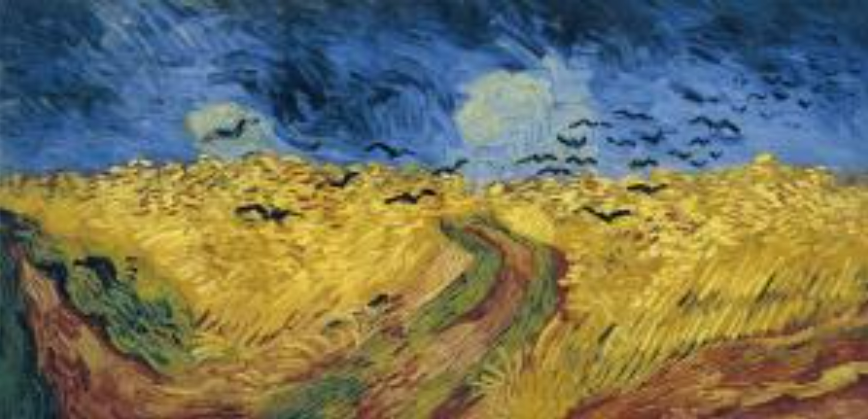
Wheat Field and Crows – Van Gogh Museum Ticket Types
Partly for this reason, the artist’s suicide clues are sought in this work. Let’s examine that period together. At the beginning of July 1890, Vincent Van Gogh went alone to Paris to stay with his brother and wife, Jo. His brother Theo was in poor health and had serious financial problems, a cause of great concern for Van Gogh, who was conscious of the burden on his family and brother. Also, his nephew Vincent was sick and his wife Jo was also suffering from exhaustion. Van Gogh quickly returned to Auvers, after which he fell into depression. In a note he wrote during the making of this painting / shortly before his suicide, Van Gogh describes his mood: “I went back there, got to work. The brush almost fell out of my hand…” .
Below is a current photo of the fields depicted in this painting:
Van Gogh used strong color combinations in this painting. The blue sky contrasts with the yellow-orange wheat, while the red of the road is intensified by the green bands of grass. The menacing sky, crows, and dead-end road are thought to refer to the end of his life, and Van Gogh’s wheat fields under stormy skies and “sadness and extreme loneliness” are thought to be describing the threatening end of his life. But, as we mentioned, perhaps these meanings are attributed as it is the artist’s last work before suicide. We don’t know.
The work is on display at the Van Gogh Museum on the 3rd floor, do n’t leave without seeing it.
Almond Blossom – Blooming Almond Tree (1890)

Almond Blossom in Bloom – Almond Blossom- Van Gogh Museum Tickets
Van Gogh made this piece on the occasion of the birth of his nephew Vincent. The buds in the work represent a new beginning, birth and happiness. Van Gogh asked his brother Theo to hang this work by his nephew’s bedside, and Theo hung the painting by little Vincent’s bedside. Like many of Van Gogh’s paintings, The Blooming Almond Tree was influenced by Japanese prints.
Bedroom in Arles – Bedroom in Arles (1888)
When Van Gogh first arrived in Arles, he found accommodation in a hotel, but immediately found it so expensive. It was cheaper and much more ideal for him to rent a house where he and Gaugin could eat, sleep and paint. He finally found the house called the Yellow House. This work belongs to Van Gogh’s bedroom in the Yellow House.

Bedroom in Arles – The Bedroom in Arles – Van Gogh Museum, Amsterdam.
Research has shown that the strong colors we see in this work today are the result of discoloration over the years. The walls and doors, for example, were originally purple rather than blue. The seemingly odd angle of the rear wall is not an error of Van Gogh. The corner is really crooked. Although it may seem that the rules of perspective are not applied correctly throughout the picture, this is a conscious choice. Vincent told his brother Theo in a letter for this work that he had deliberately “flattened the inside” and cast his shadow so that his painting would resemble a Japanese print.
There are 3 versions of this picture. One version is at the Van Gogh Museum, another at the Orsay Museum in Paris, and another at the Art Institute of Chicago in Chicago.
Self Portrait Paintings of Van Gogh
The artist has works in which he painted his own portrait in the Van Gogh Museum. Although located in The Courtauld Gallery, London, the most famous of these is the portrait with the ear bandage and the gray hat. In addition, another self-portrait by Van Gogh with his ear cut off and a pipe in his mouth belongs to the private collection of Philip Niarhos.

Van Gogh Self-Portraits – The First Two Are In The Museum
Self-portraits are located on the 1st floor of the museum.
ADVICES:
- Before your visit to the Van Gogh Museum, we recommend that you read Art with Umberto Arte: Artists-Movements-Paintings-Mythology .
- The Van Gogh Museum is on the Google Arts Culture page with all its works. You can find more of the artist’s works here.
- In our recommended videos section below, there is a Youtube video where all of Van Gogh’s works are featured quickly, we recommend you to watch it.
Activities at the Van Gogh Museum
The museum administration organizes guided tours on Thursdays. The tour takes about an hour. Explanations are given in English and Dutch. You can also watch a video about the artist’s life and works in the Van Gogh Museum hall.
On Fridays, the museum remains open until 21:00. Special music program, guided tours and workshop activities are organized for today. Workshops, free treasure hunts and children’s parties are held on weekends. If you are visiting with your children, you can also evaluate these activities.
Van Gogh Sunflowers Exhibition
In July and August 2019, the artist’s Sunflowers exhibition will be held. You can visit the Van Gogh museum in the auditorium (lounge) on Monday, Wednesday and Thursday between 10 am and 12 noon. The exhibition ends on 1 September. In addition, the temporary exhibition Van Gogh’s dreams will be in the museum at the same time.
The paintings “Seascape in Scheveningen” and “Reformed Church in Nuenen ” were stolen from the museum in 2002 . You can visit the paintings whose restoration and conservation processes have been completed as of September 15th.
Location and transport
The Van Gogh Museum, located in the center of Amsterdam and in the Museum Square, is easy to reach. If you take tram number 12 Museumplein, number 5 Amstelveen Binnenhof or Van Baerstraat or tram number 2 Nieuw Sloten or Van Baerlastraat, you get off directly in front of the museum. Since the trams depart every half an hour, you do not have any problems with transportation.
If you want to prefer public transportation vehicles , take the buses numbered 347 or 357 – 172 ; You can get off at the Museumplein stop.
Van Gogh Museum Ticket and Entrance Fees
As we mentioned in our visiting tips section below, the Van Gogh Museum is busy whenever you go. If you do not want to wait in the ticket queue of the most visited museum of Amsterdam and the Netherlands, we strongly recommend that you buy your ticket online in advance.
We recommend that you do not leave your visit planning to the last minute, as it is difficult to find online tickets even for the same day and the following days during the busy tourist season. We have compiled the most preferred Van Gogh Museum ticket types for you below, the tickets are divided within the museum itself and on the internet depending on the capacity. The Van Gogh Museum entrance fee is around 19 Euros as of March 2022, and an online reservation fee of +2 Euros can be obtained.
1-) Van Gogh Museum Ticket – Skip-the-Line Entry: This is the most preferred type of ticket. However, the below mentioned I Amsterdam card is more popular. There are more than 6,500 and 12,900 positive reviews about the ticket on the two sites, respectively. We recommend Tiqets and Getyourguide, two of the most preferred ticket sites worldwide, as a reference. You can buy your tickets safely from these sites by checking your date and time range.
This ticket allows you to enter the museum directly through the security control without waiting in the ticket queue. You can get the audio guide and booklet as an additional option on these web pages, After purchasing your Van Gogh Museum Ticket, you will receive an sms and an e-mail. You can scan and pass the barcode, so paper tickets are not required. For this reason, do not enter your sms and e-mail incorrectly. Go directly to the entrance with your online ticket.
2-) Enter with I Amsterdam Card: The card is valid for 24 hours – 96 hours. We have examined this card in detail as Museum Tickets . You can find it in our I Amsterdam Card article. With this pass-card, you can enter 44 museums in Amsterdam free of charge. In addition, you have the right to use public transportation free of charge, free canal tours , discounts at selected restaurants. This card is in the Rijksmuseum and the Van Gogh Museum. The choice is up to you according to your visit plan. You can print the card and use it on mobile if you wish. As of the date of our article, there are 1800 positive comments about it.
3-) Van Gogh Museum Ticket & Amsterdam Canal Cruise Combo Ticket: There are more than 2,000 positive reviews about this combo ticket option. If you are not going to enter the Rijks Museum, but are going to do a canal tour and visit the Van Gogh Museum, this combo ticket is a sensible option. Card price is 65 Euros as of March 2022
4-) Van Gogh Museum Guided Tour : On this 2.5-hour guided tour in English, you will be visiting a wide range of Van Gogh Museum’s best-known and lesser-known works, accompanied by a professional guide. It is a preferable option if you have a good level of English.
5-) Van Gogh Museum & Rijks Museum Guided Tour : With this “combo” tour package, which is active in some periods of the year and some periods of the year, you can tour the two most visited museums of Amsterdam for 8 hours with a guide. The language of the tour is English and Spanish. You are traveling with a small group, not with a crowd of tens of tourists. A light lunch is also offered as part of the tour. In addition, the Amsterdam Canal Cruise is also included as part of the tour.
Visiting Tips and Museum Hours
Whenever you go, the Van Gogh Museum is busy. However, for a more enjoyable tour, visiting the Van Gogh Museum between 09:00 and 11:00 in the morning or after 15:00 in the afternoon can help you avoid peak times. Also, avoid visiting on weekends if possible. It gets very busy on weekends. After all, it is the Netherlands’ most popular museum.
We recommend that you wear comfortable shoes during your visit to the museum . There are sections in the museum where photography is allowed and not allowed. If you don’t want to deal with security, pay attention to this issue. Backpacks and suitcases are not allowed in the museum. You can leave it in the car/hotel or in the pawn booths at the stations. Until recently, there was a cloakroom on the ground floor, and they used to take your belongings and give you a number, but recently this practice has also been removed. So no lockers/cloakrooms. It should be noted that there is no problem with the stroller, the building also has an elevator for the disabled.
It takes about 2 hours for Van Gogh to take a tour of his works without hesitation and digesting his works . There is a cafe in the museum where you can eat and drink, and there is a store on the ground floor where you can buy souvenirs. We usually do not recommend museum shops, but if you have a good opportunity, stop by, even if the museum shop here is expensive.
Van Gogh Museum, whose entrance hours vary periodically, is open to visitors 365 days a year . As the Museum Tickets team, we follow and update the hours, but let’s share it anyway:
- Between 21 June-01 September 2019 and 23-31 December , visiting hours are between 09.00-19.00 on weekdays. It is open from 09:00 in the morning to 21:00 in the evening on Fridays and Saturdays .
- Between 02 September and 27 October 2019 , visiting hours are between 09.00 and 18.00. Only on Friday at 21:00 the visit ends.
- Between 28 October and 22 December 2019, visiting hours are between 09:00-17:00. It is only open until 21:00 on Fridays.
- Between 09:00 and 17:00 on 25 December, Christmas Day, 31 December and New Year’s Eve ; Open from 11:00 to 19:00 on 1 January.
In this article, we tried to give information about Van Gogh by mentioning everything about the Van Gogh Museum. We also informed you about Van Gogh Museum Ticket, Van Gogh Museum Entrance Fee and price, online ticket types. We welcome your valuable photos and comments. Thank you.
Location and Directions
Art & Culture
‘Netherlands’ Stonehenge’ Discovered: 4000-Year-Old Graveyard and Glass Beads From Mesopotamia Found
Published
12 months agoon
15/08/2023By
Kenta Fox
In the Netherlands, where excavations were started in 2017, a discovery was made that sheds light on history.
The ruins found in the region were an area determined to have been built about 4000 years ago and used for religious ceremonies. A tumulus in which 60 people were buried and a single glass bead produced only in the Mesopotamian region at that time were unearthed in the area.
Cemetery used as sundial:
- Illustration image of how the region was suffocating at that time.
The 20-meter-diameter tumulus, which was built by piling up soil and hosting the remains of 60 men, women and children, also contained some passages. The task of these passages was quite different.

netherlands
The people of the time had built the gateways so that Sunlight would shine through them on the longest and shortest days. At the same time, the tumulus itself served as a sundial . It was shared that thanks to this watch, people can follow important times such as festivals and harvest times.
Moreover, this was not the only tumulus found. Scientists discovered two more small tumuli nearby. It was determined that these three tumuli were used as a cemetery for 800 years .
Another surprise points to Mesopotamia:
Another discovery made in the region was a glass bead produced in Mesopotamia 4000 years ago . Scientists stated that the glass bead was not produced in the Netherlands, but was brought to the region from Mesopotamia after a 5,000-year journey.

glass bead produced in Mesopotamia 4000 years ago

Exploring Movie Theaters in Amsterdam. Amsterdam, the cultural hub of the Netherlands, is a city known for its vibrant arts scene. From historic landmarks to contemporary galleries, Amsterdam offers a diverse range of cultural experiences. Among its offerings, the city boasts an array of captivating movie theaters that cater to both locals and tourists. In this article, we will take you on a journey through Amsterdam’s movie theaters, highlighting their unique features, cinematic offerings, and the immersive experiences they provide.
Exploring Movie Theaters in Amsterdam
1. Pathé Tuschinski
Pathé Tuschinski stands as a true gem among Amsterdam’s movie theaters. Located in the heart of the city on Reguliersbreestraat, this iconic theater is renowned for its grand art deco architecture, ornate interiors, and lavish atmosphere. Step into a world of elegance and indulge in the latest blockbusters, arthouse films, and special screenings. With its luxurious seating, state-of-the-art projection, and immersive sound systems, Pathé Tuschinski promises an unforgettable movie-going experience.
Address: Prinsengracht 452, 1017 KE Amsterdam
Website: http://www.uitkijk.nl/
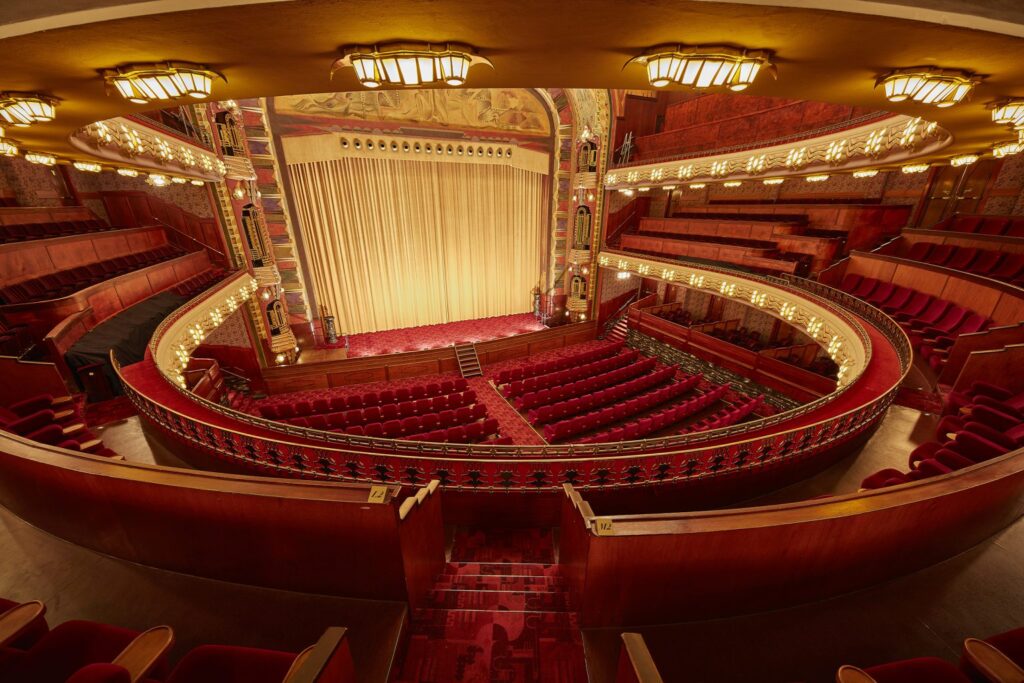
2. Eye Filmmuseum
Situated on the northern bank of the IJ River, the Eye Filmmuseum is not just a movie theater but a haven for film enthusiasts. Its striking modern architecture, featuring a futuristic white structure, instantly captures attention. The museum houses an extensive collection of films, exhibits, and interactive installations, making it a paradise for cinema lovers. With multiple screening rooms that showcase a diverse range of films, including classics, art films, and experimental works, the Eye Filmmuseum celebrates the art of filmmaking in all its forms.
Address: IJpromenade 1, 1031 KT Amsterdam
Website: https://www.eyefilm.nl/
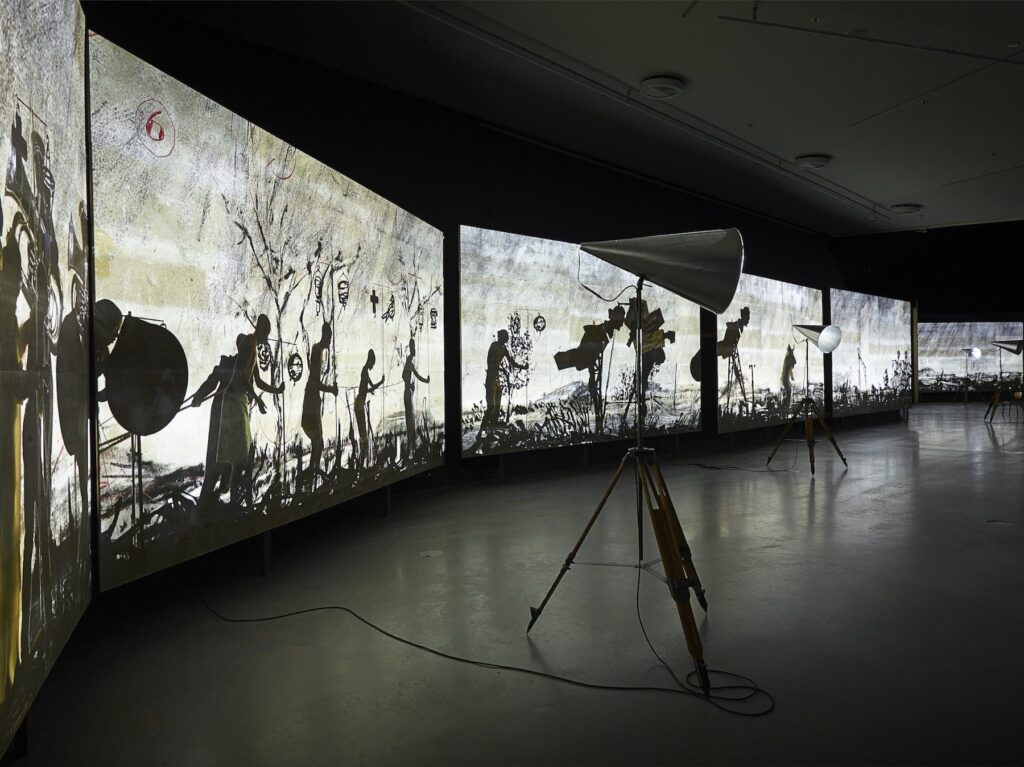
3. FilmHallen
FilmHallen, nestled in the vibrant district of Amsterdam-West, is a cultural hotspot that combines film screenings with a bustling food market and various other entertainment options. This former tram depot turned cinema boasts a relaxed and contemporary ambiance, featuring comfortable seating and excellent viewing facilities. FilmHallen showcases an eclectic mix of international and independent films, documentaries, and special events, making it a go-to destination for cinephiles seeking unique cinematic experiences.
Address: Hannie Dankbaarpassage 12, 1053 RT Amsterdam
Website: http://www.filmhallen.nl/

4. Kriterion
Kriterion is a beloved institution in Amsterdam, known for its rich history and commitment to supporting independent and arthouse cinema. Located near the University of Amsterdam, this student-run movie theater has been operating since 1945. Kriterion showcases a carefully curated selection of films, including international releases, retrospectives, and thematic film cycles. Besides its cinematic offerings, Kriterion also hosts discussions, debates, and cultural events, making it a vibrant hub for film enthusiasts and intellectuals.
Address: Roetersstraat 170, 1018 WE Amsterdam
Website: https://www.kriterion.nl/

5. De Uitkijk
For those seeking an intimate and cozy movie-watching experience, De Uitkijk is a hidden gem tucked away in the picturesque neighborhood of Prinsengracht. This historic theater, dating back to 1912, is the oldest continuously operating cinema in Amsterdam. With its vintage charm and single-screen setup, De Uitkijk offers a unique setting to enjoy art films, classics, and cult favorites. Unwind in its comfortable seats and soak up the nostalgic atmosphere while immersing yourself in the magic of the silver screen.
Address: Prinsengracht 452, 1017 KE Amsterdam
Website: http://www.uitkijk.nl/

Amsterdam’s movie theaters provide an enchanting blend of cinematic experiences, architectural splendor, and cultural significance. Whether you find yourself in a grand art deco palace like Pathé Tuschinski or a contemporary hub like the Eye Filmmuseum, each theater offers its own distinct charm and selection of films. From mainstream blockbusters to thought-provoking arthouse cinema, Amsterdam’s movie theaters cater to diverse tastes and provide an opportunity to immerse oneself in the magic of storytelling on the big screen. So, grab some popcorn, find your preferred seat, and let Amsterdam’s movie theaters transport you to captivating worlds and unforgettable cinematic journeys.
Art & Culture
Amsterdam’s Museums: A Treasure Trove of Art, History, and Culture
Published
1 year agoon
12/06/2023By
Berry Fox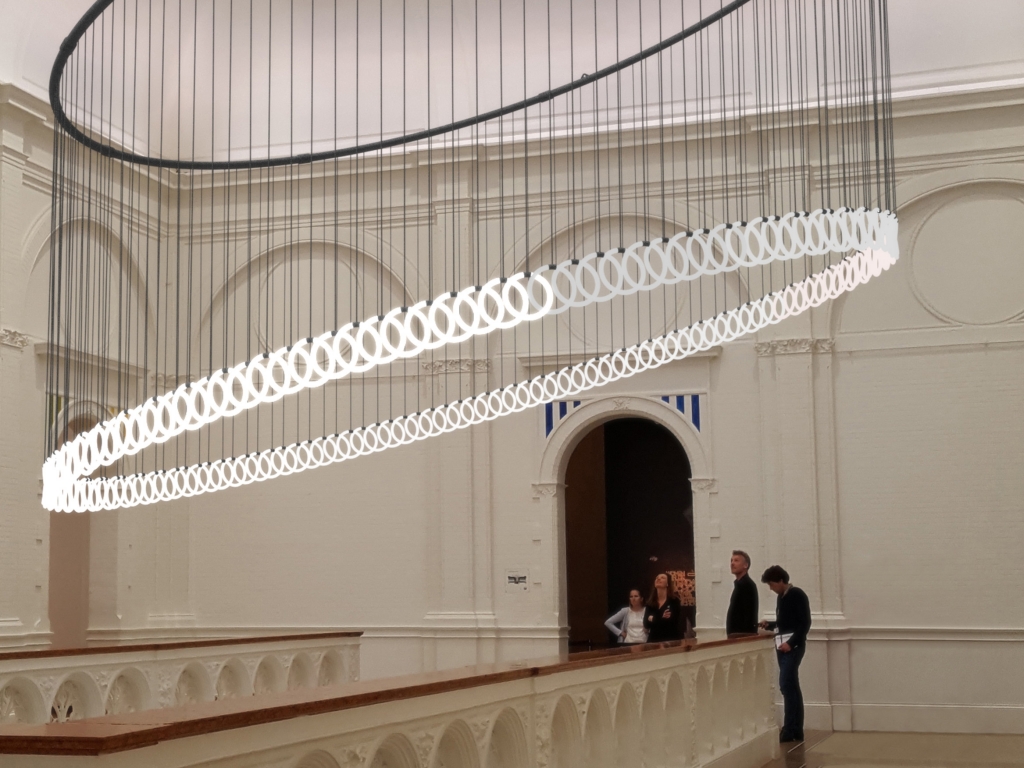
Amsterdam, the vibrant capital of the Netherlands, is renowned for its rich cultural heritage and flourishing art scene. With an impressive array of museums, the city offers visitors an unparalleled opportunity to immerse themselves in art, history, and innovation. In this article, we delve into the diverse collection of Amsterdam’s museums, highlighting their unique offerings and why they are must-visit destinations for art enthusiasts and history buffs alike.
Amsterdam’s Museums: A Journey Through Art and History
Amsterdam is home to an extraordinary collection of museums, each offering a distinct glimpse into the city’s vibrant past and artistic legacy. Here are some of the notable museums that showcase Amsterdam’s cultural riches:
Rijksmuseum
The Rijksmuseum is a crown jewel in Amsterdam’s cultural landscape. Housed in an impressive building at the Museumplein, it is the largest museum in the Netherlands. The Rijksmuseum boasts an extensive collection of Dutch art and history, including masterpieces by renowned painters such as Rembrandt, Vermeer, and Van Gogh. Visitors can marvel at iconic works like “The Night Watch” and explore the museum’s diverse exhibitions that span over 800 years of Dutch culture.
Rijksmuseum Ticket Prices:
- Adults: €20
- Children (under 18): Free
- European Youth Card (CJP): €10
- Museumkaart (Dutch Museum Card) holders: Free

Van Gogh Museum
Dedicated to the life and works of the iconic Dutch artist, the Van Gogh Museum is a must-visit for art enthusiasts. Located near the Museumplein, this museum houses the largest collection of Van Gogh’s paintings and drawings worldwide. From his early works to his famous masterpieces like “Sunflowers” and “The Starry Night,” visitors can trace the artistic evolution of this influential artist and gain a deeper understanding of his life and creative genius.
Van Gogh Museum Ticket Prices:
- Adults: €20
- Children (under 18): Free
- Museumkaart (Dutch Museum Card) holders: Free
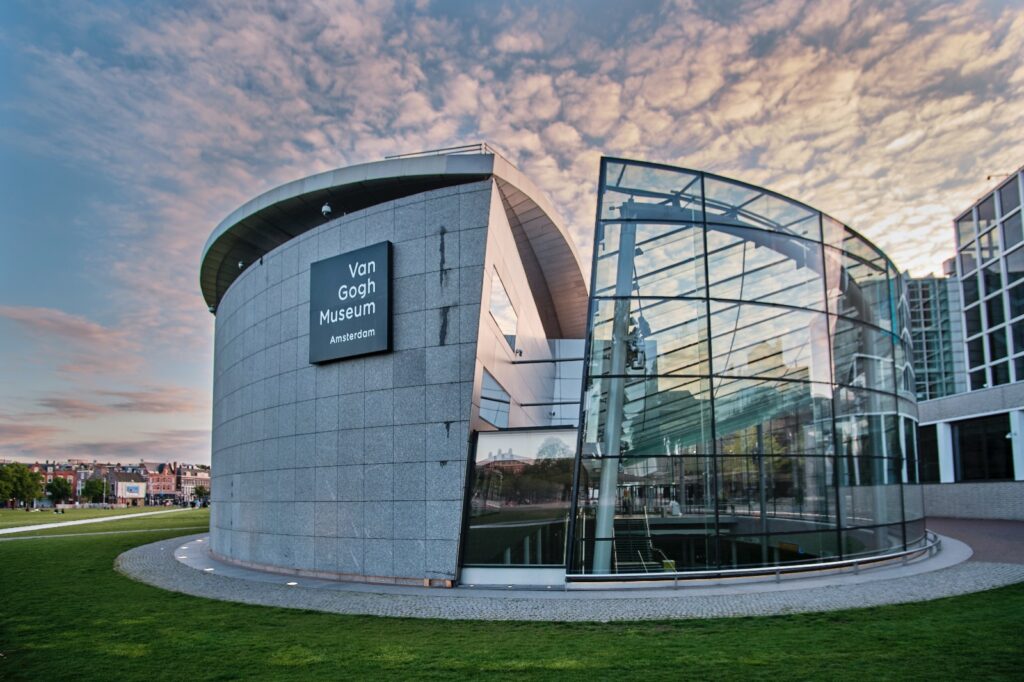
Anne Frank House
A poignant and powerful museum, the Anne Frank House offers a glimpse into the life of Anne Frank, a young Jewish girl who hid from the Nazis during World War II. Located in the actual house where Anne Frank and her family sought refuge, the museum provides a sobering experience, presenting the story of the Holocaust through the eyes of a courageous young girl. The Anne Frank House serves as a reminder of the importance of tolerance, compassion, and the preservation of human rights.
Anne Frank House Ticket Prices:
- Adults: €14
- Children (10-17 years old): €7
- Children (0-9 years old): Free

Stedelijk Museum
For lovers of modern and contemporary art, the Stedelijk Museum is a treasure trove of creativity. Located in the Museum Quarter, it houses an extensive collection of modern and contemporary artworks, including paintings, sculptures, photography, and design objects. The museum showcases influential art movements and hosts temporary exhibitions that highlight emerging artists and innovative perspectives. With its dynamic displays and engaging programs, the Stedelijk Museum is a vibrant hub of artistic exploration.
Stedelijk Museum Ticket Prices:
- Adults: €18.50
- Museumkaart (Dutch Museum Card) holders: Free
- Children (under 18): Free
- CJP cardholders: €9.25
- I Amsterdam City Card holders: Free

Rembrandt House Museum
Step into the world of the Dutch master at the Rembrandt House Museum. This meticulously restored 17th-century house was the residence and studio of Rembrandt van Rijn, one of history’s greatest painters. Visitors can explore the artist’s living quarters, view his etchings, and gain insights into his techniques and artistic process. The museum also hosts exhibitions featuring Rembrandt’s contemporaries and provides a comprehensive understanding of the Golden Age of Dutch art.
Rembrandt House Museum Ticket Prices:
- Adults: €15
- Children (under 6): Free
- Children (6-17): €5
- Museumkaart (Dutch Museum Card) holders: Free
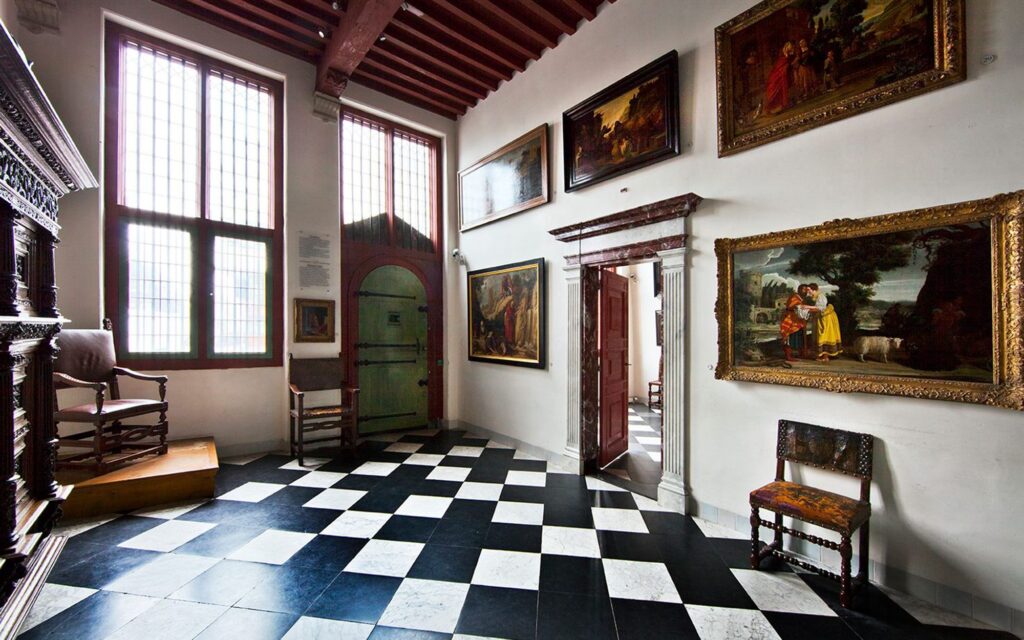
Amsterdam’s museums offer an extraordinary cultural experience, inviting visitors to journey through centuries of art, history, and innovation. Whether you’re marveling at the Dutch Masters at the Rijksmuseum, immersing yourself in the vibrant colors of Van Gogh’s works, or reflecting on the poignant story of Anne Frank, each museum presents a unique narrative and a deeper understanding of Amsterdam’s cultural heritage. So, when you visit Amsterdam, make sure to carve out time to explore these magnificent museums and indulge
Art & Culture
Exploring the Timeless Beauty of Dutch Architecture
Published
1 year agoon
13/05/2023By
Berry Fox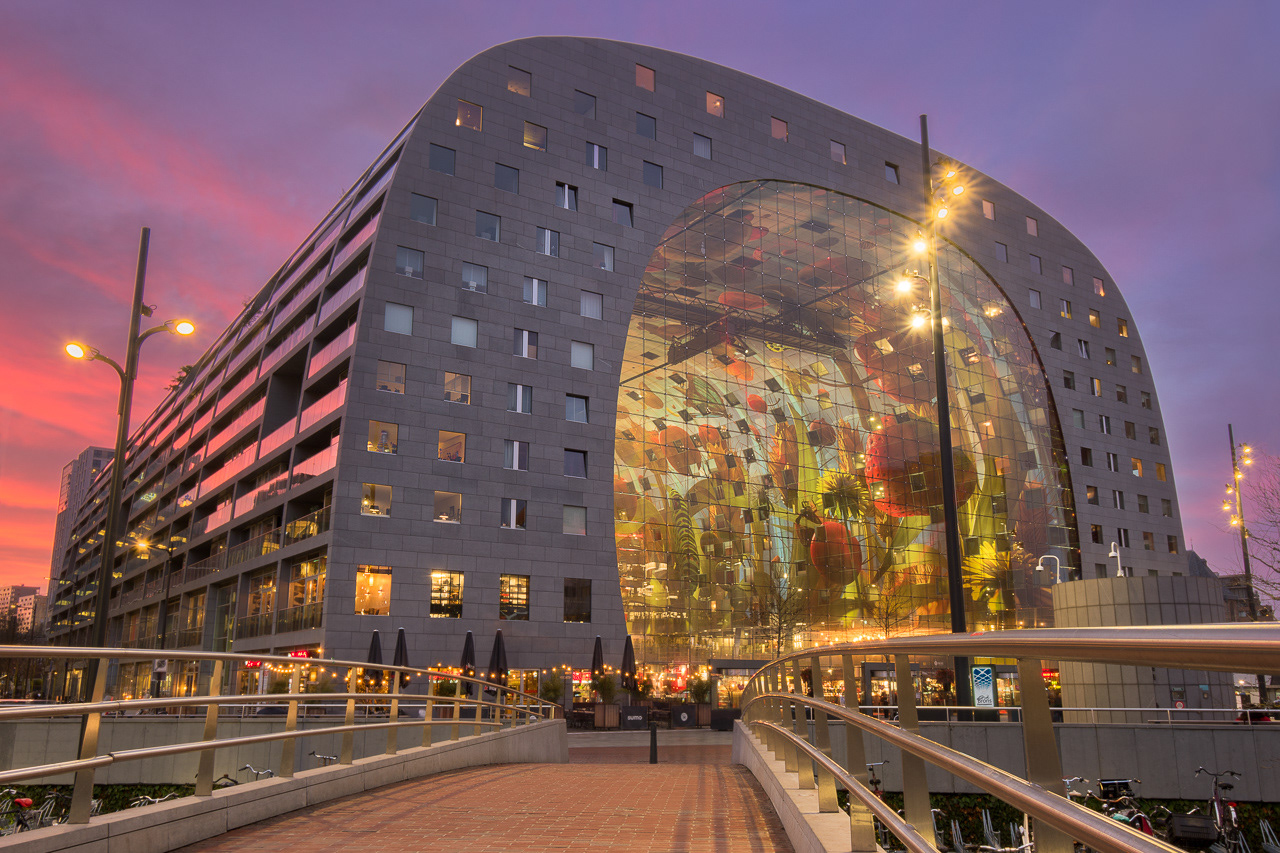
Exploring the Timeless Beauty of Dutch Architecture. The Netherlands is home to some of the most stunning and innovative architecture in the world. From medieval cathedrals to modernist buildings, Dutch architecture is a testament to the country’s rich cultural heritage and contemporary design prowess. In this article, we will take a closer look at the unique characteristics of Dutch architecture and explore some of the most iconic buildings in the country.
One of the defining features of Dutch architecture is its focus on functionality and practicality. Dutch architects have always prioritized the needs of the people who will use the building, whether it is a residential house or a public space. This approach has led to the creation of spaces that are not only visually striking but also functional and comfortable.
One of the most iconic examples of Dutch architecture is the Amsterdam Canal Houses, which date back to the 17th century. These narrow, tall houses were built along the canals of Amsterdam and are characterized by their gabled facades, ornate decorations, and stepped roofs. They were designed to maximize the limited space available in the city center and to create a sense of grandeur and wealth for their owners.
Another important period in Dutch architecture is the Art Nouveau movement of the late 19th and early 20th centuries. This style was characterized by its use of flowing lines, floral motifs, and intricate decorations. The most famous example of Art Nouveau architecture in the Netherlands is the Rietveld Schröder House in Utrecht, designed by Gerrit Rietveld in 1924. This house is a masterpiece of modernist architecture and a UNESCO World Heritage Site.
In the post-World War II period, Dutch architecture underwent a radical transformation with the emergence of the Dutch Structuralism movement. This movement rejected the modernist emphasis on form and function and instead focused on the underlying structure of the building. The most famous example of Dutch Structuralism is the Centraal Beheer building in Apeldoorn, designed by Herman Hertzberger in 1972. This building features a modular design and an open-plan layout, which was a departure from the traditional office building.

Centraal Beheer
In recent years, Dutch architecture has continued to evolve with the rise of sustainable design and the use of new technologies. The Rotterdam Market Hall, designed by MVRDV, is a prime example of this trend. The building features a stunning arched roof and an innovative system for collecting rainwater, which is then used to irrigate the surrounding park.
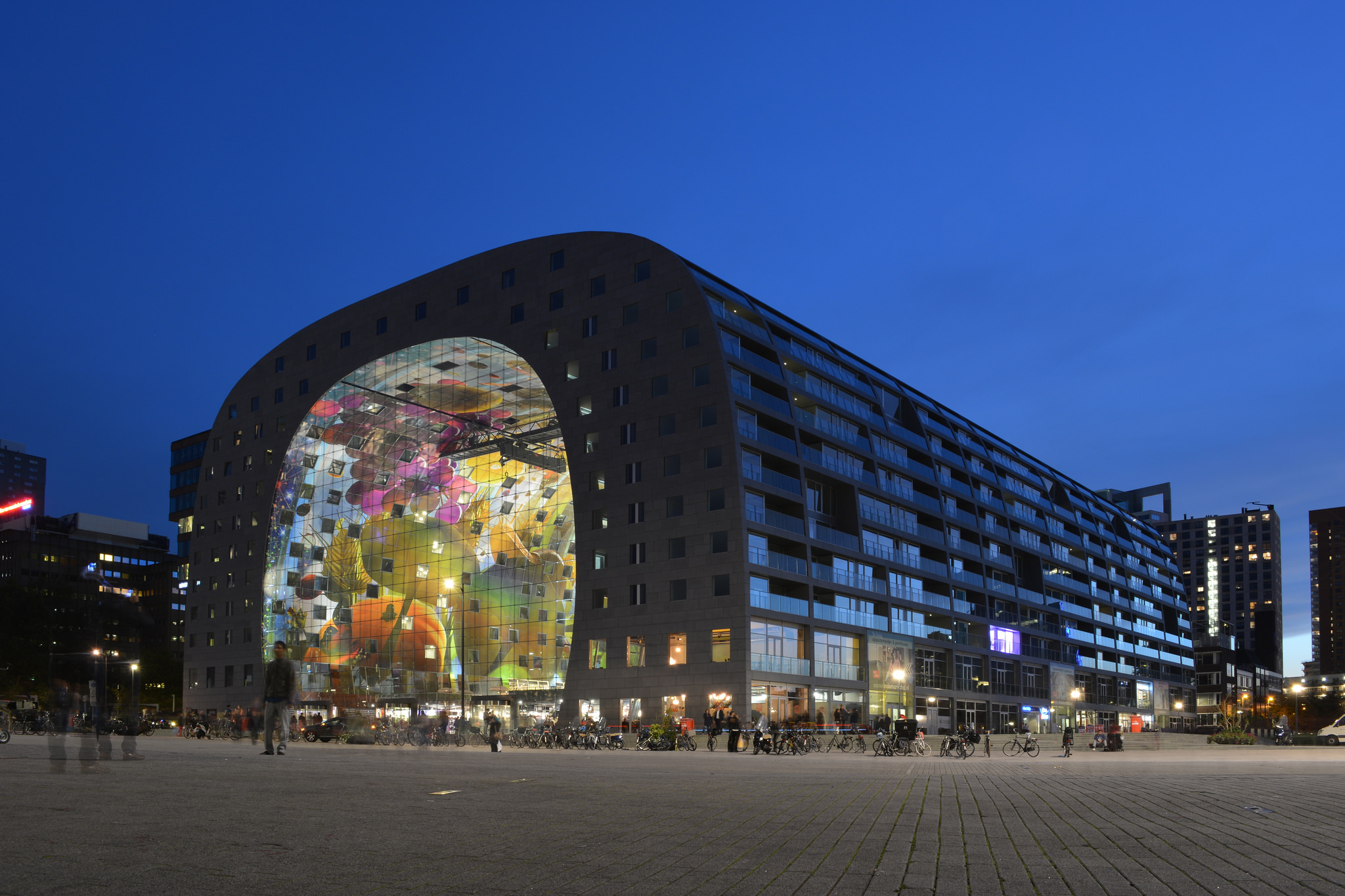
Rotterdam Market Hall
In conclusion, Dutch architecture is a rich and diverse field that spans centuries and encompasses a wide range of styles and movements. From the ornate Canal Houses of Amsterdam to the modernist Rietveld Schröder House and the sustainable Rotterdam Market Hall, Dutch architecture continues to inspire and captivate people from around the world.
Art & Culture
Tipping in the Netherlands: A Guide to Showing Appreciation for Great Service
Published
1 year agoon
12/05/2023By
Berry Fox
In the Netherlands, tipping is not a compulsory practice, but it is always appreciated if you are happy with the service provided. Unlike other countries, where tipping is often expected, in the Netherlands, it is not customary to tip more than a few euros, and sometimes, not at all. In this article, we will explore the tipping culture in the Netherlands and provide you with some guidance on when and how much to tip.
First of all, it is important to note that service charges are typically included in the prices of food and drinks in the Netherlands. This means that the total amount you see on your bill already includes a service charge, which usually ranges from 5% to 10%. In most cases, this means that there is no need to leave a tip on top of the service charge. However, if you received excellent service, you are always welcome to leave a little extra.
When it comes to restaurants, a good rule of thumb is to leave a 5-10% tip if you are satisfied with the service. This is especially true if the server went above and beyond to make your dining experience memorable. However, it is not necessary to tip if you were not happy with the service. In this case, it is better to speak to the manager or owner and let them know what went wrong.
It is also worth noting that many Dutch people round up their bill when paying in cash. For example, if your bill is €18.50, you may choose to pay €20 and let the server keep the change as a small tip. This is a common practice and shows your appreciation for the service provided.

When it comes to bars and cafes, tipping is not expected, but again, it is always appreciated. If you are happy with the service, it is common to leave a euro or two per drink. However, if you are paying for a round of drinks for a group of people, it is not necessary to leave a tip for each individual drink.
Finally, when it comes to other service providers such as hairdressers, taxi drivers, and hotel staff, tipping is not expected, but it is always appreciated. A small tip of a few euros is a nice gesture to show your appreciation for the service provided.
In conclusion, tipping in the Netherlands is not compulsory, but it is always appreciated if you are satisfied with the service provided. Service charges are usually included in the prices of food and drinks, so tipping is not always necessary. However, leaving a small tip of 5-10% in restaurants or rounding up your bill in cash is a common practice and a nice way to show your gratitude. Remember, if you were not happy with the service, it is better to speak to the manager or owner rather than leaving a poor tip.
Art & Culture
Discovering the Magnificent Monuments of the Netherlands
Published
1 year agoon
02/05/2023By
Berry Fox
Discovering the Magnificent Monuments of the Netherlands. The Netherlands is a country with a rich history, and as a result, it boasts a wide range of historical monuments that reflect its past. From ancient castles and forts to impressive palaces and churches, the Netherlands has a lot to offer to visitors interested in architecture, history, and culture.
One of the most famous monuments in the Netherlands is the Rijksmuseum, located in Amsterdam. This museum houses an impressive collection of art and historical artifacts, including paintings by Dutch Masters like Rembrandt, Vermeer, and Van Gogh. The building itself is a work of art, with its grand entrance hall, marble floors, and stunning stained glass windows.
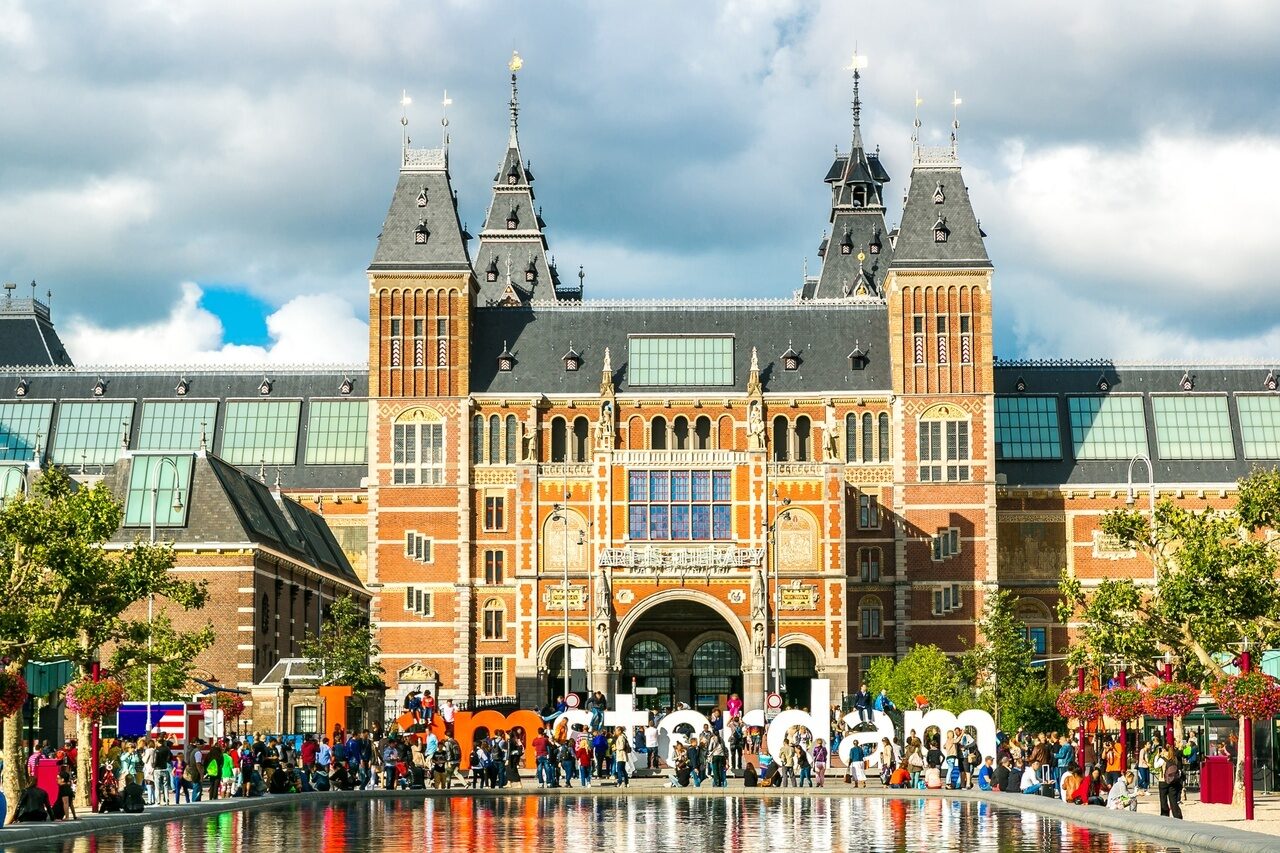
Another notable monument in Amsterdam is the Anne Frank House. This museum is dedicated to the life of Anne Frank, who wrote her famous diary while hiding from the Nazis during World War II. Visitors can tour the secret annex where Anne and her family lived in hiding for two years, and learn about the experiences of Jewish people during the war.
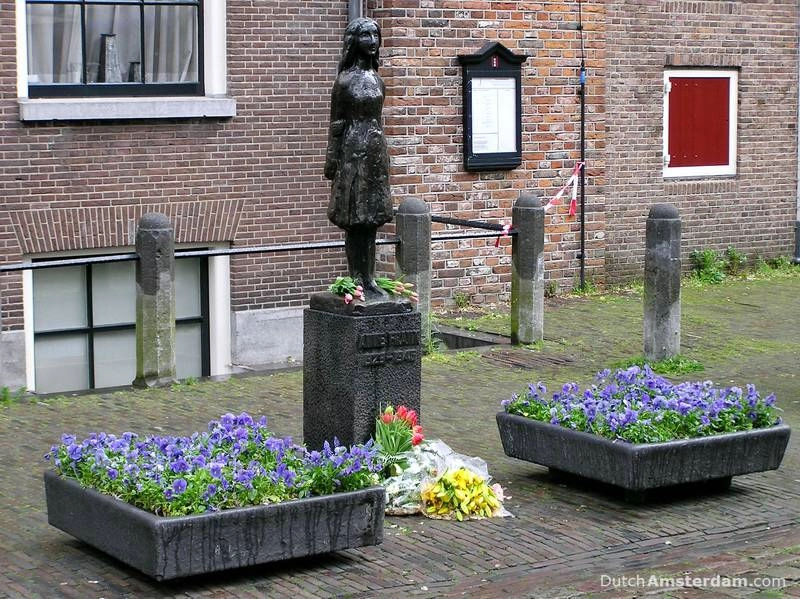 Moving outside of Amsterdam, there are many other notable monuments to explore. In The Hague, visitors can see the Peace Palace, home to the International Court of Justice. The palace was built in 1913 and is a beautiful example of neo-Renaissance architecture. Nearby is the Binnenhof, a Gothic-style complex of buildings that houses the Dutch parliament.
Moving outside of Amsterdam, there are many other notable monuments to explore. In The Hague, visitors can see the Peace Palace, home to the International Court of Justice. The palace was built in 1913 and is a beautiful example of neo-Renaissance architecture. Nearby is the Binnenhof, a Gothic-style complex of buildings that houses the Dutch parliament.

In the city of Utrecht, the Dom Tower is a must-see monument. This 14th-century bell tower is the tallest church tower in the Netherlands, standing at over 112 meters tall. Visitors can climb to the top for stunning views of the city below.

Other notable monuments include the Castle De Haar, a stunning 19th-century castle that was restored to its former glory in the early 20th century, and the Wouda Steam Pumping Station, a UNESCO World Heritage Site that is still in operation today.

One monument that cannot be missed is the Kinderdijk windmills. This UNESCO World Heritage Site features 19 windmills that were built in the 18th century to help control flooding in the area. Visitors can tour the windmills and learn about their history and operation.

In conclusion, the Netherlands has an impressive collection of monuments that reflect its rich history and culture. From famous museums and historical buildings to ancient castles and windmills, there is something for everyone to enjoy. Whether you are a history buff, an architecture enthusiast, or simply looking for a unique cultural experience, the Netherlands is a must-visit destination.
Art & Culture
May 1 is a public holiday in the Netherlands?
Published
1 year agoon
01/05/2023By
Berry Fox
May 1 is a public holiday in the Netherlands? May 1st, also known as Labor Day or “Dag van de Arbeid” in Dutch, is an official public holiday in the Netherlands. This day is dedicated to honoring the contributions of workers and celebrating the labor movement. Here’s a closer look at how the Dutch celebrate Labor Day and what this holiday means to them.
History of Labor Day in the Netherlands The origins of Labor Day can be traced back to the late 19th century, when workers across Europe began organizing and fighting for better wages, working conditions, and labor rights. In the Netherlands, Labor Day was first celebrated in 1890, with workers organizing parades, rallies, and other events to promote their cause. Over the years, Labor Day has become an important symbol of the Dutch labor movement and a reminder of the struggles and achievements of workers throughout history.
Celebrating Labor Day in the Netherlands On May 1st, many Dutch people take the day off work to celebrate Labor Day with friends and family. Some may attend parades or rallies organized by labor unions or political parties. These events often feature speeches, music, and other forms of entertainment, and they provide a space for workers to come together and celebrate their solidarity and achievements.

In some cities, special Labor Day markets are held, where workers and craftspeople sell their wares and showcase their skills. These markets offer a chance for people to support local businesses and learn more about the work that goes into creating handmade goods.
Other Dutch people may choose to spend Labor Day relaxing at home, enjoying a barbecue or picnic with loved ones, or simply taking a break from the stresses of work. For many, Labor Day is an opportunity to reflect on the importance of labor rights and the ongoing struggle for fair and equitable working conditions.
Labor Day Traditions in the Netherlands One of the most iconic Labor Day traditions in the Netherlands is the “mug cake.” This simple dessert is made by mixing flour, sugar, and milk in a mug and then cooking it in a microwave. The tradition of eating mug cakes on Labor Day dates back to the 1930s, when workers who couldn’t afford expensive pastries began making their own cakes at home. Today, mug cakes remain a beloved part of Labor Day celebrations in the Netherlands.
In conclusion, May 1st is an important public holiday in the Netherlands, dedicated to celebrating workers and their contributions to society. Whether attending parades and rallies, enjoying a mug cake, or simply taking a day off to relax, Labor Day provides an opportunity for Dutch people to come together and reflect on the importance of labor rights and fair working conditions.
Art & Culture
Green and Sustainable: The Netherlands Garden Management
Published
1 year agoon
01/05/2023By
Berry Fox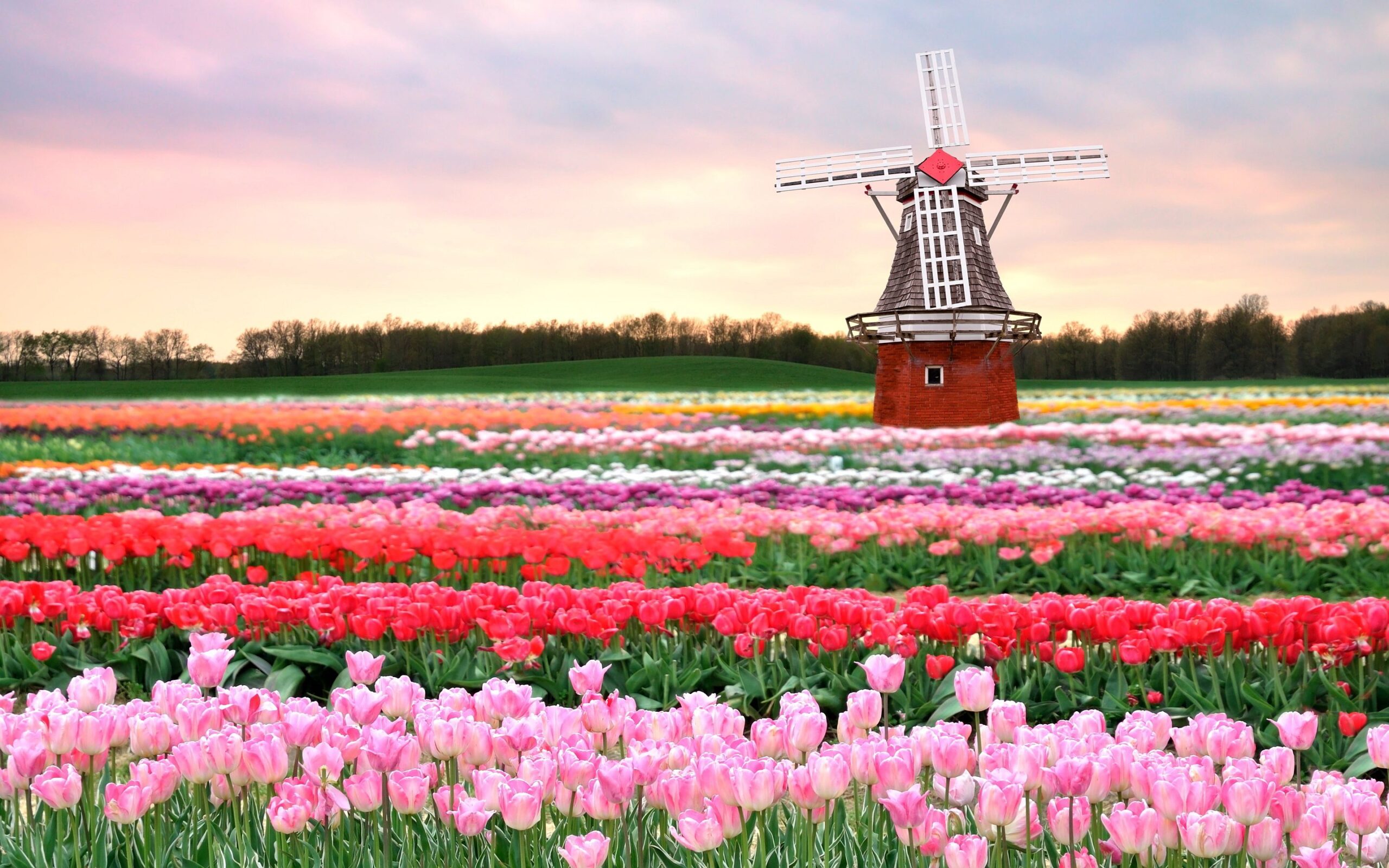
Green and Sustainable: The Netherlands Garden Management. The Netherlands is well-known for its beautiful gardens and green spaces. But what many people may not know is that behind the beauty lies a highly regulated and sustainable approach to garden management. The Dutch take their gardens seriously, and for good reason. A well-managed garden not only looks beautiful, but it also contributes to the health of the environment and the well-being of the people who enjoy it.
One of the key principles of garden management in the Netherlands is sustainability. This means that gardens are designed and maintained in a way that minimizes harm to the environment and supports biodiversity. For example, many gardens in the Netherlands use native plants that are well-suited to the local climate and require less water and maintenance. This not only helps to conserve water resources but also provides habitats for local wildlife.

Another important aspect of garden management in the Netherlands is water management. As a low-lying country with a high water table, the Netherlands is prone to flooding. Gardens are designed to help manage rainwater runoff, which can help prevent flooding and waterlogging. This may include features such as rain gardens, green roofs, and permeable paving. These features help to absorb rainwater and allow it to filter back into the ground, rather than running off into the streets and sewers.
In addition to sustainable design, garden management in the Netherlands also involves regular maintenance. Many gardens are managed by professional gardeners who are trained to use sustainable techniques and practices. This may include tasks such as pruning trees, trimming hedges and bushes, and mowing the lawn. Regular maintenance helps to keep the garden healthy and beautiful while also supporting biodiversity.
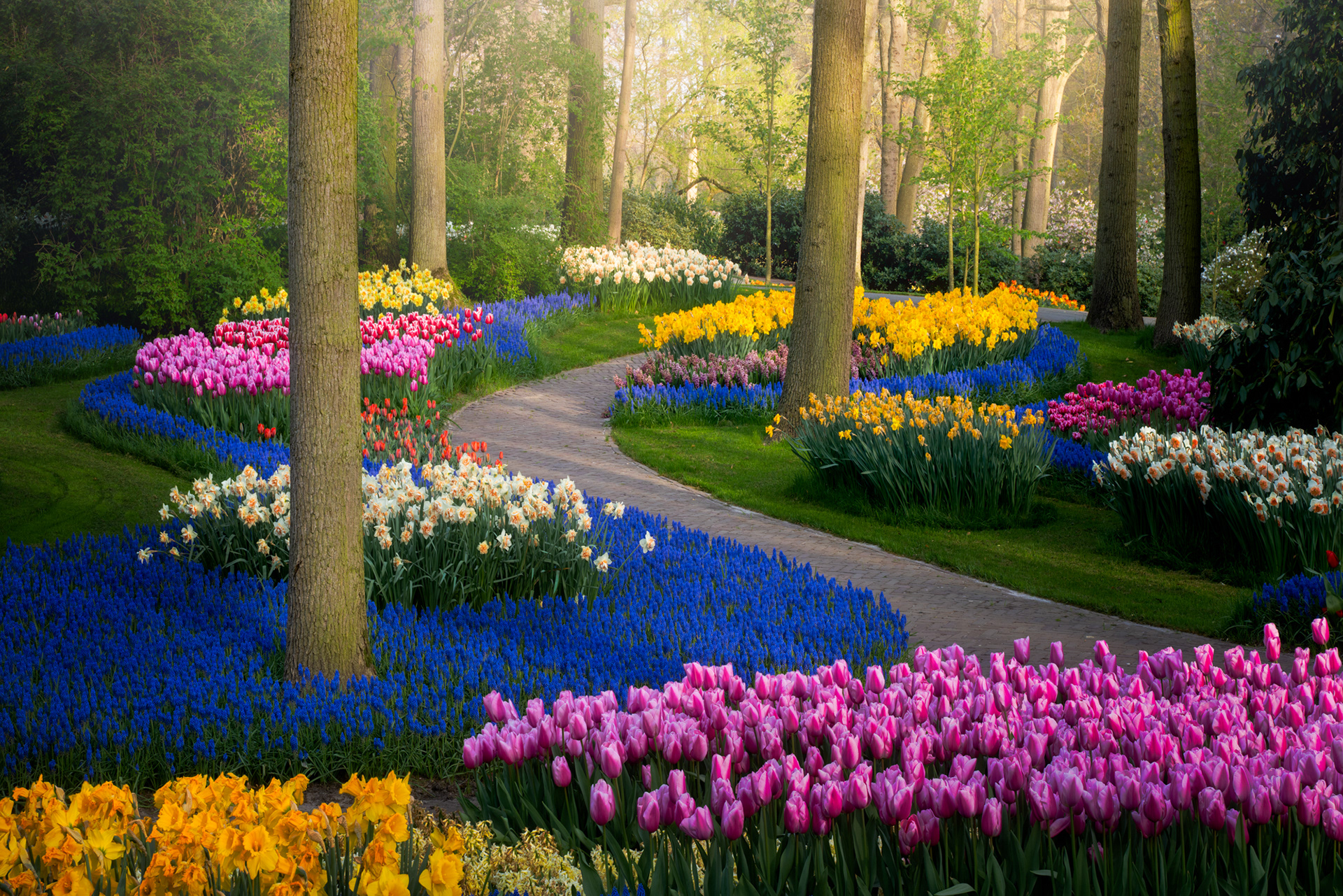
Overall, garden management in the Netherlands is a holistic approach that prioritizes sustainability, biodiversity, and professional maintenance. This approach not only benefits the environment but also contributes to the health and well-being of the people who enjoy these spaces. The Netherlands’ commitment to sustainable garden management is a shining example of how we can create beautiful and functional spaces while also protecting the planet.
Art & Culture
Why some people hate living in the Netherlands?
Published
1 year agoon
30/04/2023By
Berry Fox
Why some people hate living in the Netherlands? It is not accurate to say that people hate living in the Netherlands. In fact, the Netherlands is consistently ranked as one of the happiest and most livable countries in the world. However, like any country, there are some people who may not enjoy living there for a variety of reasons.
Some common complaints about living in the Netherlands may include the weather, which can be damp and chilly, especially in the winter months. Additionally, the cost of living can be quite high, particularly in cities like Amsterdam. Some people may also find the Dutch culture and customs to be different from what they are used to, which can lead to feelings of homesickness or culture shock.
Overall, it is important to note that individual experiences and perspectives will vary, and it would be unfair to generalize and say that people hate living in the Netherlands.

The Netherlands is consistently ranked as one of the happiest and most livable countries in the world, and it has a high quality of life that many people enjoy.
While there may be some individuals who have had negative experiences or difficulties adjusting to life in the Netherlands, it is important to acknowledge that this is not the case for everyone. It is also important to recognize that people’s experiences and perspectives will vary based on a variety of factors such as personal preferences, cultural background, and life circumstances.
Rather than focusing on why people hate living in the Netherlands, it may be more productive to explore the challenges that some individuals may face when living in a new country and how they can be addressed. For example, language barriers, cultural differences, and homesickness can all be obstacles for expats and immigrants in the Netherlands, but there are resources and support systems available to help individuals navigate these challenges.
Ultimately, the Netherlands is a diverse and welcoming country with a rich culture and history, and it is important to approach discussions about living there with an open mind and a willingness to learn and understand different perspectives.
Why some people hate living in the Netherlands?
The Netherlands is a small, densely populated country in Western Europe, known for its liberal culture, vibrant cities, and cycling culture. The country is famous for its canals, tulips, and windmills. It has a high standard of living, with a well-developed economy, excellent healthcare, and a good education system. However, some people might find living in the Netherlands challenging due to the following reasons:
1. Climate: The Netherlands has a maritime climate, which means that it can be rainy and windy most of the year. Some people might find the climate gloomy and depressing.
2. High cost of living: The cost of living in the Netherlands is relatively high compared to other European countries. Housing, food, and transportation can be expensive, which might be challenging for some people.
3. Language: Dutch is the official language in the Netherlands, and not everyone might be fluent in it. It can be difficult to integrate into the culture and make friends without knowing the language.
4. Cultural differences: The Netherlands has a distinct culture, which might be different from what some people are used to. Some people might find it difficult to adjust to the Dutch way of life.
It is essential to understand that everyone’s experience of living in the Netherlands is different, and it’s okay to not enjoy living in a particular country. If you’re struggling to adapt, it might be helpful to seek advice and support from people who have experienced similar challenges.
What to do to avoid cultural shock in the Netherlands?
Moving to a new country can be an exciting and challenging experience. Culture shock is a common experience when moving to a new country, and it can be especially daunting if you are moving to a country with a culture that is vastly different from your own. Here are some tips on how to avoid culture shock when moving to the Netherlands:
1. Learn about the culture: Before you move, it’s a good idea to learn about Dutch culture, customs, and traditions. This can help you to understand and appreciate the cultural differences that you will encounter.
2. Language learning: Learning the Dutch language can be an excellent way to connect with the local culture and to communicate more effectively with locals. Take advantage of language courses offered in your area or consider using language learning apps like Duolingo or Babbel.
3. Connect with locals: Building relationships with locals can help you to feel more connected to your new home and can also provide a support system. Joining social clubs, attending local events, or volunteering can be great ways to meet new people and get involved in the community.
4. Stay open-minded: Try to approach cultural differences with an open mind and a willingness to learn. Avoid making assumptions or judging cultural practices without fully understanding them.
5. Stay connected with your own culture: While it’s important to embrace your new home and culture, it’s also important to stay connected with your own cultural heritage. This can help you to maintain a sense of identity and provide a source of comfort and support.
Moving to a new country can be an enriching and rewarding experience, but it can also be challenging. By staying open-minded, learning about the culture, and building relationships with locals, you can minimize the impact of culture shock and make a smooth transition to your new home in the Netherlands.

What to do to love the Netherlands?
The Netherlands is a beautiful and vibrant country with a rich culture and history. If you are looking to fall in love with the Netherlands, here are some tips to help you do just that:
1. Explore the country: The Netherlands is a small country, but there is plenty to see and explore. Take advantage of the country’s excellent public transportation system and visit some of its famous cities like Amsterdam, Rotterdam, and Utrecht. You can also venture out into the countryside and visit picturesque towns and villages.
2. Embrace the culture: The Netherlands has a unique culture with a long history of art, music, and literature. Attend local events and festivals, visit museums and art galleries, and try the local cuisine. The Dutch are also known for their love of cycling, so rent a bike and explore the country on two wheels.
3. Connect with the locals: The Dutch are generally friendly and welcoming people. Strike up a conversation with locals, join social clubs or activities, or volunteer in your community. Making connections with locals can help you feel more at home in the Netherlands.
4. Learn the language: Although most Dutch people speak English, learning the Dutch language can help you to connect more deeply with the local culture and people. Consider taking language classes or using language learning apps to improve your Dutch language skills.
5. Appreciate the natural beauty: The Netherlands is known for its stunning landscapes, including its tulip fields, windmills, and canals. Take a stroll through a park, visit the beach, or take a boat tour to appreciate the country’s natural beauty.
By exploring the country, embracing the culture, connecting with locals, learning the language, and appreciating the natural beauty, you can fall in love with the Netherlands and all that it has to offer.

How long does it take to get used to a new country?
The amount of time it takes to get used to a new country can vary greatly depending on the individual and their circumstances. Some people may feel comfortable and adjusted to their new home within a few weeks or months, while for others it may take a year or more to fully adapt to their new surroundings.
Factors that can impact the amount of time it takes to adjust to a new country include:
1. Cultural differences: If the culture of the new country is vastly different from one’s own, it may take longer to adjust to the new way of life.
2. Language barriers: Learning a new language or adapting to a different dialect can take time, and may impact one’s ability to communicate and feel comfortable in their new environment.
3. Support network: Having a strong support network of friends, family, or colleagues can make a big difference in adjusting to a new country.
4. Personal resilience: Personal factors such as flexibility, openness to new experiences, and a positive attitude can also impact how quickly one adjusts to a new country.
It is important to note that the process of adjusting to a new country can be challenging and may involve periods of homesickness or culture shock. However, with time and effort, most people are able to adapt and thrive in their new surroundings. It is also important to seek support if needed, such as counseling or support groups, to help manage any difficulties or challenges that may arise during the adjustment period.
Art & Culture
Castle de Haar: A Majestic Icon of the Netherlands
Published
1 year agoon
24/04/2023By
Berry Fox
Castle de Haar: A Majestic Icon of the Netherlands. If you’re planning a visit to the Netherlands, make sure to add Castle de Haar to your itinerary. This magnificent castle is located just outside the city of Utrecht and is one of the most stunning examples of medieval architecture in the country. Its impressive size, ornate decoration, and stunning gardens make it a must-see attraction for visitors.
Castle de Haar History
The castle was originally built in the 14th century by the van de Haar family, but fell into disrepair over the centuries. In the late 1800s, Baron Etienne van Zuylen van Nyevelt van de Haar inherited the castle and decided to restore it to its former glory. He hired the famous Dutch architect Pierre Cuypers to design and oversee the renovation, which took over 20 years to complete.
The castle was transformed into a luxurious palace, complete with grand halls, a beautiful chapel, and ornate bedrooms. Cuypers also added many modern features, such as electricity and central heating. The castle was finally completed in 1912 and became a popular destination for royalty, celebrities, and other wealthy individuals.
![]()
Castle de Haar Today
Today, Castle de Haar is open to the public for tours and events. Visitors can explore the castle’s lavish interior, which includes a grand entrance hall, a stunning dining room, and a beautiful library. The castle’s collections include art, furniture, and other artifacts from the van Zuylen family’s collection.
One of the highlights of Castle de Haar is its stunning gardens. The castle’s grounds are home to a variety of gardens, including a rose garden, a formal garden, and a maze. The gardens are meticulously maintained and provide a beautiful backdrop for photos and relaxation.
![]()
Events at Castle de Haar
Throughout the year, Castle de Haar hosts a variety of events, including concerts, exhibitions, and fairs. One of the most popular events is the annual Christmas fair, which takes place in December and features dozens of vendors selling unique gifts and decorations.
![]()
Conclusion
Castle de Haar is a majestic icon of the Netherlands and a must-see attraction for visitors to the country. Its rich history, stunning architecture, and beautiful gardens make it a popular destination for tourists from all over the world. Whether you’re interested in history, architecture, or simply want to enjoy a beautiful day in the gardens, Castle de Haar is a destination that you won’t want to miss.
Castle De Haar Ticket Prices
The ticket prices for Castle de Haar in the Netherlands vary depending on the type of ticket and age of the visitor. As of my knowledge cutoff date of September 2022, the standard ticket prices were:
- Adults: € 18,00
- Children (4-12 years old): € 12,50
- Children (under 4 years old): free
- Museum Card: free
- Parking: 6 €
There are also discounts available for groups and students. Additionally, there may be additional charges for special exhibitions or events.
Please note that these prices are subject to change, so it’s always a good idea to check the official website for the latest information.
Where is the Castle De Haar in Netherlands?
Castle de Haar is located in the province of Utrecht in the Netherlands. It is situated in the town of Haarzuilens, which is approximately 10 kilometers west of the city of Utrecht. The castle is easily accessible by car or public transportation, and there is ample parking available for visitors.
Location: Kasteellaan 1, 3455 RR Utrecht
Website: https://www.kasteeldehaar.nl/

Best Outdoor Activities in Amsterdam | Natural and Cultural Wonders

Major disruption in train services between Rotterdam and Den Haag until December

More than 800 film producers and actors in the Netherlands call for sanctions against Israel

Scientists warn: Ultra-processed food is as addictive as cigarettes

The price of a pack of cigarettes in Belgium will be 10 euros

There will also be an increase in the consumption tax on soft drinks in the Netherlands

Wanted murder suspect Bretty Dorder in the Netherlands was caught!

Fighting dog feces: Tracing feces with DNA

Ajax – Feyenoord: 0-4 (MATCH RESULT)

Armed attack in Rotterdam, Netherlands: 3 dead

Home Ownership Rate Declines in European Union Countries

Van Gogh’s stolen painting was found after 3.5 years

Pakistani cricketer who put a bounty on Geert Wilders’ head gets 12 years in prison

Fossil fuel protest in the Netherlands on the second day: 500 activists detained

Ajax-Feyenoord derby canceled due to incidents

Bicycles in Amsterdam: The Art of Commuting

Amsterdam’s Cycling Culture: A Lifestyle to Embrace

Amsterdam’s Bike-Friendly Neighborhoods

The Wheel Revolution: How Amsterdam’s Bicycles Reshaped the Cityscape

How to eat cheap food in Amsterdam?

Arts and Entertainment: Amsterdam Guide 2023

Heartbeat of Amsterdam: Exploring the Iconic Bicycles

How to Rent a Bike in Amsterdam

Billboards of OnlyFans model spark controversy in UK

Dutch Supreme Court: Israeli soldiers cannot be tried in our country

Amsterdam fine for loud car engines and exhausts

Verstappen equals F1 record

Exploring Amsterdam’s Best Laptop-Friendly Cafés for Digital Nomads

How Netherlands Emergency system works?

2 Russian warplanes approaching Dutch airspace intercepted

In another city in the Netherlands, a bacteria warning was issued in drinking water

Warning from TK Maxx in the Netherlands: Electric leakage in the adapters!

Rising rents in the Netherlands led citizens to Belgium

Children’s bicycle helmets are recalled for safety reasons in the Netherlands

Train tickets increase by 6.6 percent in the Netherlands

Mother and son missing for 2 months in the Netherlands still not found

The sweltering heat is coming in the Netherlands

‘Netherlands’ Stonehenge’ Discovered: 4000-Year-Old Graveyard and Glass Beads From Mesopotamia Found

Large cruise ships banned in Amsterdam seeking to reduce tourist numbers



